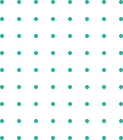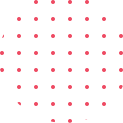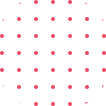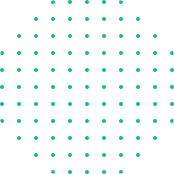Open CV projects-Open CV Python projects
Best Open CV projects-Open CV Python projects
Best and Latest Exciting open CV projects ideas with Source Code in Python, For Beginners and experienced/Research projects for research academics-2023
Open CV Projects For Computer science students
Final year students of BE/B Tech/M tech and Research students, if you are looking for some latest OpenCV Projects with Source code you can explore here ,also we are the source for research topics from IEEE and real time case studies for product development.
OPEN CV:
Open Source Computer Vision Library is powerful machine learning, and AI-based library used to develop and solve computer vision problems. Since the technology is progressing everyday and to huge demands of image processing applications like image manipulation, processing, face detection, voice recognition, motion tracking, autonomous vehicles, security applications, image based consumer applications, Traffic monitoring applications , object detection list goes on.
Final year students of BE/B tech/M.Tech students (CSE,ECE,ISE,EEE)with background of good programming skills and have a passion to build a career in computer vision, we recommend to work on these projects which helps to build hands-on skills required for the industry. Companies like Google, Facebook, Microsoft, and Intel already deploy OpenCV to develop computer vision applications and they are developing products to solve societal issues.
IEEE Open CV Projects for BE/B.tech,M tech -Computer science, ECE,EEE and Research Students
-
Covid-19 facemask detection with deep learning and computer vision
-
Raspberrypi Based Assistive Communication System for Deaf, Dumb and Blind Person using open cv
-
Smart Voting System through Facial Recognition using open cv
-
An improved fatigue detection system based on behavioral characteristics of driver using open cv
-
Image processing based Tracking and Counting Vehicles using open cv
-
Traffic Sign Detection and Recognition Based on Convolutional Neural Network
-
OPEN CV - Computer Vision for Attendance and Emotion Analysis in School Settings
Top Open CV project domains you can focus to build your skills in OPEN CV
-
Face and Voice Recognition for the visually Impaired
-
Image processing projects using open CV python
-
A smart attendance system is tool for online models of education such as Zoom App. Google etc.to monitor the students attendance in real time.
-
Augmented Reality (AR) by learning to locate faces, detect shapes, etc.,
-
Objects detection and face recognition.
-
Open CV projects / machine learning credit card reader
-
Handwritten digit detector, or face reader.
-
COVID-19 Projects :The Real-Time Face Mask Detection was developed using Python Detection Open-CV.
-
Traffic Signs Recognition Using CNN & Keras In Python With Source Code
-
A Emotion Detection Open-CV Python/ML- Detecting the real-time emotion of the person with a camera input.
The corona virus COVID-19 pandemic is causing a global health crisis so the effective protection methods is wearing a face mask in public areas according to the World Health Organization (WHO). The COVID-19 pandemic forced governments across the world to impose lockdowns to prevent virus transmissions. Reports indicate that wearing facemasks while at work clearly reduces the risk of transmission. An efficient and economic approach of using AI to create a safe environment in a manufacturing setup. A hybrid model using deep and classical machine learning for face mask detection will be presented. A face mask detection dataset consists of with mask and without mask images , we are going to use OpenCV to do real-time face detection from a live stream via our webcam. We will use the dataset to build a COVID-19 face mask detector with computer vision using Python, OpenCV, and Tensor Flow and Keras. Our goal is to identify whether the person on image/video stream is wearing a face mask or not with the help of computer vision and deep learning.
Assisting to the people with visual, hearing, vocal impairment through the modern system is a challenging job. Nowadays researchers are focusing to address the issues of one of the impairment but not all at once. This work is mainly performed to find the unique solution/ technique to assist communication for the people with visual, hearing, vocal impairment. This system helps the impaired people to have the communication with each other and also with the normal person. The main part of the work is Raspberrypi on which all the activities are carried out. The work provide the assistance to visually impaired person by letting them to hear what is present in the text format. The stored text format is spoke out by the speaker. For the people with hearing impairment the audio signals are converted into text format by using speech to text conversion technique. This is done with the help of AMR voice app which makes them to understand what the person says can be displayed as the text message . And for people with vocal impairment, their words are conveyed by the help of speaker
Facial recognition is a category of biometric software which works by matching the facial features. We will be studying the implementation of various algorithms in the field of secure voting methodology. There are three levels of verification which were used for the voters in our proposed system. The first is UID verification, second is for the voter card number, and the third level of verification includes the use of various algorithms for facial recognition.
The road accidents have increased significantly. One of the major reasons for these accidents, as reported is driver fatigue. Due to continuous and longtime driving, the driver gets exhausted and drowsy which may lead to an accident. Therefore, there is a need for a system to measure the fatigue level of driver and alert him when he/she feels drowsy to avoid accidents. Thus, we propose a system which comprises of a camera installed on the car dashboard. The camera detects the driver’s face and tracks its activity. From the driver’s face, the system observes the alteration in its facial features and uses these features to observe the fatigue level. Facial features include eyes (fast blinking or heavy eyes) and mouth (yawn detection). Principle Component Analysis (PCA) is thus implemented to reduce the features while minimizing the amount of information lost. The parameters thus obtained are rocessed through Support Vector Classifier (SVC) for classifying the fatigue level. After that classifier output is sent to the alert unit.
In this research work, we explore the vehicle detection technique that can be used for traffic surveillance systems. This system works with the integration of CCTV cameras for detecting the cars. Initial step will always be car object detection. Haar Cascades are used for detection of car in the footage. Viola Jones Algorithm is used in training these cascade classifiers. We modify it to find unique objects in the video, by tracking each car in a selected region of interest. This is one of the fastest methods to correctly identify, track and count a car object with accuracy up to 78 percent.
Human activities recognition has become a groundwork area of great interest because it has many significant and futuristic applications; including automated surveillance, Automated Vehicles, language interpretation and human computer interfaces (HCI). In recent time an exhaustive and in depth research has been done and progress has been made in this area. The idea of the proposed system is a system which can be used for surveillance and monitoring applications. This paper presents a part of newer Human activity/interaction recognition onto human skeletal poses for video surveillance using one stationary camera for the recorded video data set. The traditional surveillance cameras system requires humans to monitor the surveillance cameras for 24*7 which is oddly inefficient and expensive. Therefore, this research paper will provide the mandatory motivation for recognizing human action effectively in real-time (future work). This paper focuses on recognition of simple activity like walk, run, sit, stand by using image processing techniques.
Traffic sign recognition system (TSRS) is a significant portion of intelligent transportation system (ITS). Being able to identify traffic signs accurately and effectively can improve the driving safety. This paper brings forward a traffic sign recognition technique on the strength of deep learning, which mainly aims at the detection and classification of circular signs using open cv. Firstly, an image is preprocessed to highlight important information. Secondly, Hough Transform is used for detecting and locating areas. Finally, the detected road traffic signs are classified based on deep learning. In this article, a traffic sign detection and identification method on account of the image processing is proposed, which is combined with convolutional neural network (CNN) to sort traffic signs. On account of its high recognition rate, CNN can be used to realize various computer vision tasks. TensorFlow is used to implement CNN. In the German data sets, we are able to identify the circular symbol with more than 98.2% accuracy.
The paper manages the reason for affirmation of vehicle speed subject to data from video record. In hypothetical part we portray the most vital procedures, to be unequivocal Gaussian blend models, DBSCAN, Kalman channel, Optical stream. The execution part is incorporated the planning game plan and the delineation of procedures for correspondence of individual areas. The end contains the primer of picked up video records utilizing various vehicles, various natures of driving and the vehicle position at the time of chronicle.
Internet has become one of the basic amenities for day-to-day living. Every human being is widely accessing the knowledge and information through internet. However, blind people face difficulties in accessing these text materials, also in using any service provided through internet. The advancement in computer based accessible systems has opened up many avenues for the visually impaired across the globe in a wide way. Audio feedback based virtual environment like, the screen readers have helped Blind people to access internet applications immensely. We describe the Voicemail system architecture that can be used by a Blind person to access e-Mails easily and efficiently. The contribution made by this research has enabled the Blind people to send and receive voice based e-Mail messages in their native language with the help of a computer.
The human face plays an important role in knowing an individual's mood. The required input are extracted from the human face directly using a camera. One of the applications of this input can be for extracting the information to deduce the mood of an individual. This data can then be used to get a list of songs that comply with the “mood” derived from the input provided earlier. This eliminates the time-consuming and tedious task of manually Segregating or grouping songs into different lists and helps in generating an appropriate playlist based on an individual's emotional features. Facial Expression Based Music Player aims at scanning and interpreting the data and accordingly creating a playlist based the parameters provided. Thus our proposed system focus on detecting human emotions for developing emotion based music player, which are the approaches used by available music players to detect emotions, which approach our music player follows to detect human emotions and how it is better to use our system for emotion detection. A brief idea about our systems working, playlist generation and emotion classification is given.
This paper presents facial detection and emotion analysis software developed by and for secondary students and teachers. The goal is to provide a tool that reduces the time teachers spend taking attendance while also collecting data that improves teaching practices. Disturbing current trends regarding school shootings motivated the inclusion of emotion recognition so that teachers are able to better monitor students’ emotional states over time. This will be accomplished by providing teachers with early warning notifications when a student significantly deviates in a negative way from their characteristic emotional profile. This project was designed to save teachers time, help teachers better address student mental health needs, and motivate students and teachers to learn more computer science, computer vision, and machine learning as they use and modify the code in their own classrooms. Important takeaways from initial test results are that increasing training images increases the accuracy of the recognition software, and the farther away a face is from the camera, the higher the chances are that the face will be incorrectly recognized. The software tool is available for download at https://github.com/ferrabacus/Digital-Class












